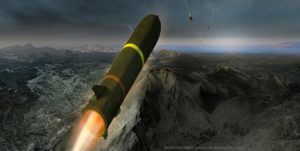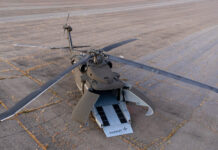 The findings of a report completed in 2019, by think tank RAND Corporation, examining the U.S. field artillery branch showed that during decades of focus on counterinsurgency operations in the Middle East, the U.S. Army’s ground fire capabilities were neglected. So much so that the U.S. Army, now greatly outgunned by its adversaries, is trying to play catch up in long range precision fires capabilities. Michael Peck of the National Interest digs into the U.S. Army’s big gun problems. He writes (abridged):
The findings of a report completed in 2019, by think tank RAND Corporation, examining the U.S. field artillery branch showed that during decades of focus on counterinsurgency operations in the Middle East, the U.S. Army’s ground fire capabilities were neglected. So much so that the U.S. Army, now greatly outgunned by its adversaries, is trying to play catch up in long range precision fires capabilities. Michael Peck of the National Interest digs into the U.S. Army’s big gun problems. He writes (abridged):
The problem is what American artillery has atrophied, Russia’s has not. “During the long years of counterinsurgency the two U.S. Army branches that suffered particularly larger reductions were field artillery and air defense,” John Gordon, a RAND researcher who worked on the study, told the National Interest. “Given the threats in Iraq and Afghanistan that is understandable. Today, however, those two branches are critically important given the major opponents we are now refocusing on.”
While Russia’s military is smaller than during the Cold War, it still fields a powerful force of howitzers, multiple rocket launchers and ballistic missiles. Russia can project long-range firepower via weapons such as the BM-30 Smerch multiple rocket launcher, with a range of 60 miles, or the SS-26 Iskander ballistic missile with a range of 250 miles. In contrast, the U.S. Army’s M109A7 Paladin 155-mm self-propelled howitzer has a range of about 15 miles with regular shells, and 20 miles with rocket-assisted projectiles.
In an attempt to fix the U.S. Army’s big gun problems, both Nammo and Boeing have been successfully testing ramjet-powered artillery projectiles. Read the press release below:
Boeing [NYSE: BA] and Nammo have successfully test-fired a ramjet-powered artillery projectile, further demonstrating the viability of one of the U.S. Army’s modernization priorities – long-range precision fires. During the June 28 test at the Andøya Test Center in Norway, a Boeing Ramjet 155 projectile was fired out of a cannon and its ramjet engine ignited successfully. It demonstrated flight stability with a well-controlled engine combustion process.
“We believe the Boeing Ramjet 155, with continued technology maturation and testing, can help the U.S. Army meet its long-range precision fires modernization priorities,” said Steve Nordlund, Boeing Phantom Works vice president and general manager. “This successful test is evidence that we are making great progress.”
“This is a historic moment for Nammo,” said Nammo Chief Executive Officer Morten Brandtzæg. “The test results demonstrate that ramjets are viable and can fundamentally change the future of artillery.
“We have great confidence in the ramjet concept,” Brandtzæg added. “The test – with all aspects from cannon firing, to the projectile body, fins, and trajectory all functioning perfectly – represents a real technological breakthrough in artillery, and a major success for Boeing, Nammo, and the U.S. Army.”
The long-range test at Andøya follows years of research, development and testing by Boeing and Nammo of ramjet technology, including more than 450 static or short-range tests.
Boeing Phantom Works and Nammo have been working together under a strategic partnership to jointly develop and produce the next generation of boosted artillery projectiles. In July 2019, the Boeing-Nammo team was awarded a contract under the U.S. Army’s XM1155 program to develop and mature the Ramjet 155 projectile. In May 2021, the team was awarded a Phase II technology development contract.
Ramjet 155 uses an engine in which the air drawn in for combustion is compressed solely by the forward motion of the projectile at supersonic speeds. Considered a hybrid between guided artillery and missiles, the program has an objective of a common round design that can be used in L39 and L58 cannons.



